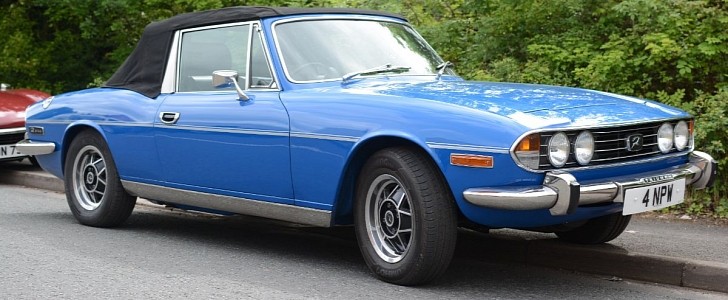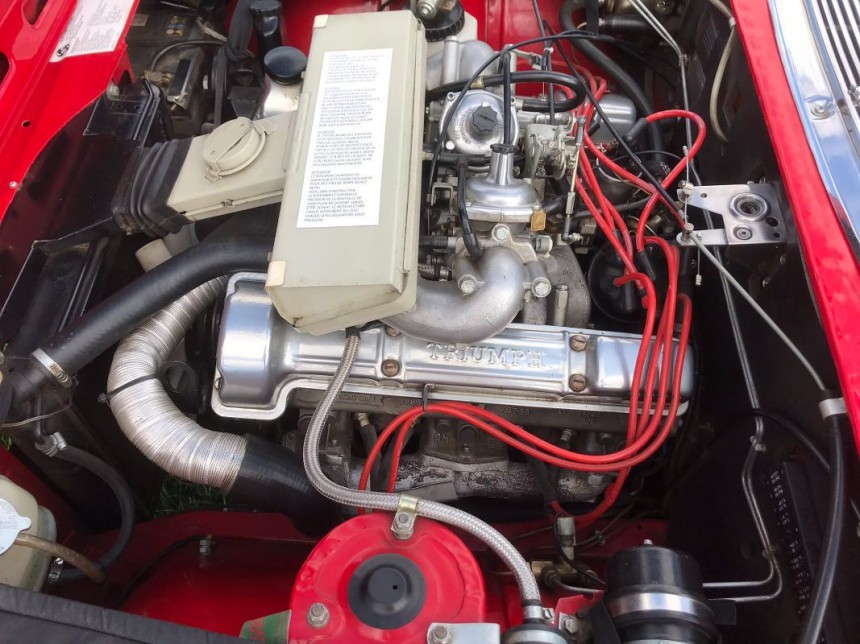Throughout history, many great cars have come and gone, with the main attraction of these vehicles being in their styling but also in the engine. The power units are the heart of every machinery, pushing what would otherwise be just some pretty faces.
In one instance, a car that looked to match pieces of art on wheels, such as the Jaguar E-Type or the Aston Martin DB5, was developed. However, under the bonnet, the machinery was compromised by what has often been considered the worst engine ever placed into an automobile. We are talking about nonother than the Triumph V8 engine, a lazy built power unit that used to be the heart of the company's new flagship, the Stag model of 1970. Unfortunately, its pervasive problems would eventually drag down both car and engine. As Jeremy Clarkson said many years ago on Top Gear, it encapsulates all that was wrong with British motoring during that era.
The origins of the Triumph V8 start with the car it was developed, the Triumph Stag, a model created to help the Triumph brand appeal to a new audience of customers as grand tourers like the two legendary models we mentioned earlier that took the world by storm during the 60s.
In 1963, an essential Italian car designer by the name of Giovanni Michelotti, who had a long-standing collaboration role with Triumph, underwent a styling exercise to create a convertible version of the company's 2000 saloon model. After positive feedback on the concept, the British manufacturer chose to push into a full-production model called the Stag.
The new model was a four-seat, open-top GT car featuring various functional additions like a unique and interesting T-bar roof arrangement. As a result, the customers could have enjoyed the safety of a hardtop and the enjoyment of a droptop. The particular roof was implemented in response to the American government's proposals after James Dean's death.
Because Triumph wanted their car to compete with some of the fastest available cars, they knew that their traditional inline four-cylinder power plants were nowhere near the challenge. As a result, the British company thought about the 2.5-liter inline-six engine, but they quickly realized it would not provide the power buyers expected from that segment. They thought about a Rover V8 engine, but in the end, they believed that their own engineers could come up with something better than that.
The first idea of Triumph's engineers was to twin their existing inline-four (initially designed for the potential to be twinned similar to the Pontiac engines) into a 2.5 liter V8. The power plant was supposed to use Bosch mechanical fuel injection, only for reliability issues to force the abandoning of this idea as Triumph felt they wouldn't be able to make the injected engine meet U.S. emission requirements. As a result, a much simpler but less efficient twin-carbureted configuration was adopted.
While the carburated engine ran cleanly enough to be sold in the U.S., it provided less power than the injected version. The engineers thought about increasing the displacement to three liters, but they did that by widening the cylinder bores. The problem with this action is that it gave the engine a massively oversquare profile which ruined the torque. In addition, the larger bores ate up into the space where the coolant passages were located, forcing them to be downsized to accommodate the larger cylinders. But in doing so, the vehicle's internal cooling capacity was horrible.
However, the most questionable decision of all was to use head studs (they are some sturdy bolts that clamp the head to the block) at two different angles on the same head. Most engines run precisely perpendicular to the block's deck, but Triumph mounted only half of them this way. The other half was about 20 degrees out of alignment because engineers thought it would be easier this way to replace certain parts.
This method was indeed avoiding a lengthy process, but at the same time, it was causing major warping issues for the cylinder heads as the straight studs heated up differently than the longer splayed studs.
Other common failures in the Triumph V8 were main bearings that were too small and failed regularly and an extremely long, single-row timing chain that stretched and needed to be replaced every 40,000 kilometers (24,854 miles). If the timing chain broke, it would destroy the valves and pistons.
When the Stag was launched in 1970, it was very well received thanks to its styling and clever T-bar roof arrangement. Unfortunately, very few enjoyed the car's performance and speed as the many problems with the V8 engine and the poor build quality made everyone run away.
With the car going on sale with an incredibly unreliable engine, plus the presence of the Rover V8 within the same market segment, the Stag was a commercial disaster for the Triumph brand. As a result, it was withdrawn from sale in the United States in 1973 after selling no more than 2,871 units.
Today, the Triumph V8 is still considered one of, if not the worst, engines ever placed into production. However, a lot of people are nostalgic about the Stag because they say it was a good car, ruined by the engine.
The origins of the Triumph V8 start with the car it was developed, the Triumph Stag, a model created to help the Triumph brand appeal to a new audience of customers as grand tourers like the two legendary models we mentioned earlier that took the world by storm during the 60s.
In 1963, an essential Italian car designer by the name of Giovanni Michelotti, who had a long-standing collaboration role with Triumph, underwent a styling exercise to create a convertible version of the company's 2000 saloon model. After positive feedback on the concept, the British manufacturer chose to push into a full-production model called the Stag.
The new model was a four-seat, open-top GT car featuring various functional additions like a unique and interesting T-bar roof arrangement. As a result, the customers could have enjoyed the safety of a hardtop and the enjoyment of a droptop. The particular roof was implemented in response to the American government's proposals after James Dean's death.
The first idea of Triumph's engineers was to twin their existing inline-four (initially designed for the potential to be twinned similar to the Pontiac engines) into a 2.5 liter V8. The power plant was supposed to use Bosch mechanical fuel injection, only for reliability issues to force the abandoning of this idea as Triumph felt they wouldn't be able to make the injected engine meet U.S. emission requirements. As a result, a much simpler but less efficient twin-carbureted configuration was adopted.
While the carburated engine ran cleanly enough to be sold in the U.S., it provided less power than the injected version. The engineers thought about increasing the displacement to three liters, but they did that by widening the cylinder bores. The problem with this action is that it gave the engine a massively oversquare profile which ruined the torque. In addition, the larger bores ate up into the space where the coolant passages were located, forcing them to be downsized to accommodate the larger cylinders. But in doing so, the vehicle's internal cooling capacity was horrible.
This method was indeed avoiding a lengthy process, but at the same time, it was causing major warping issues for the cylinder heads as the straight studs heated up differently than the longer splayed studs.
Other common failures in the Triumph V8 were main bearings that were too small and failed regularly and an extremely long, single-row timing chain that stretched and needed to be replaced every 40,000 kilometers (24,854 miles). If the timing chain broke, it would destroy the valves and pistons.
When the Stag was launched in 1970, it was very well received thanks to its styling and clever T-bar roof arrangement. Unfortunately, very few enjoyed the car's performance and speed as the many problems with the V8 engine and the poor build quality made everyone run away.
Today, the Triumph V8 is still considered one of, if not the worst, engines ever placed into production. However, a lot of people are nostalgic about the Stag because they say it was a good car, ruined by the engine.













